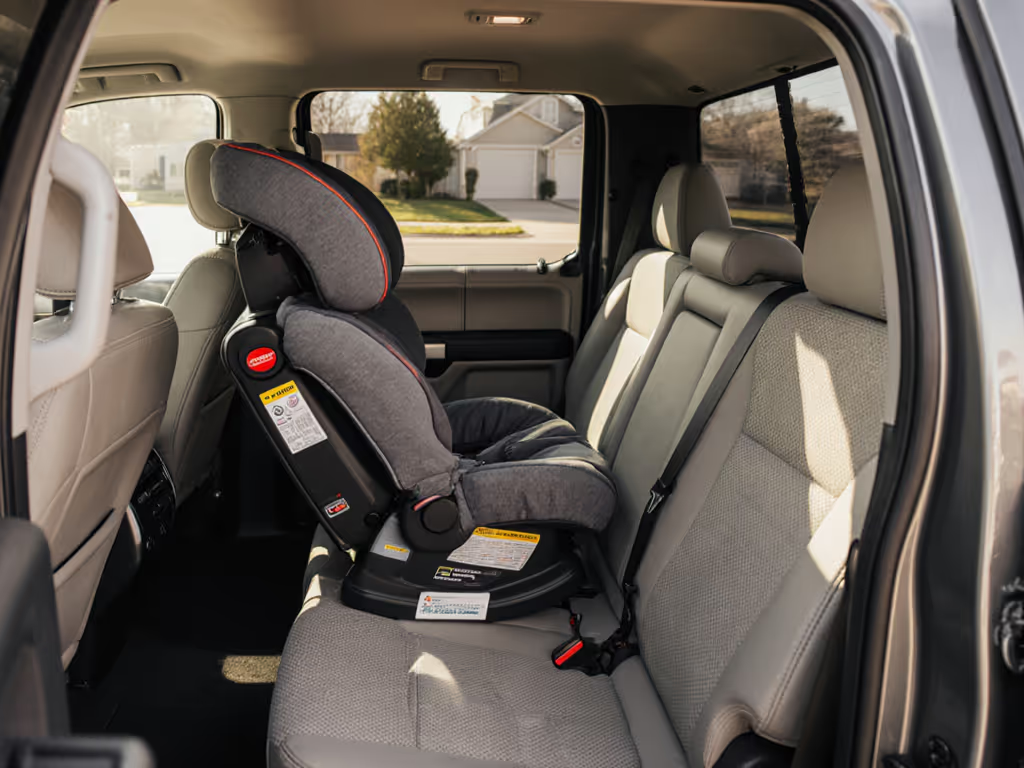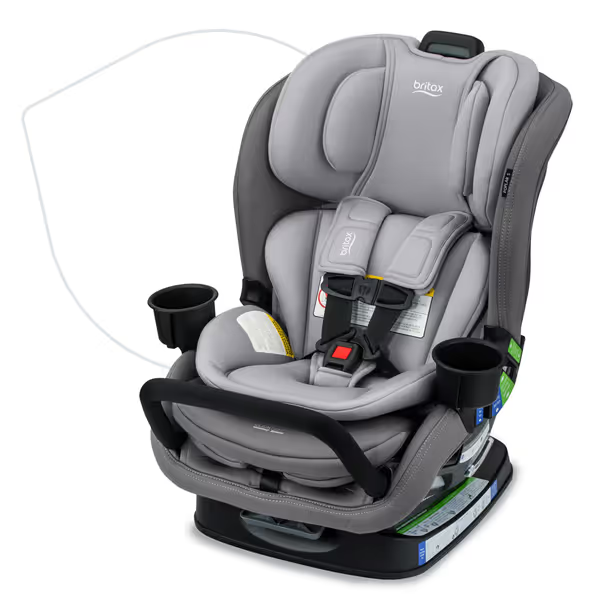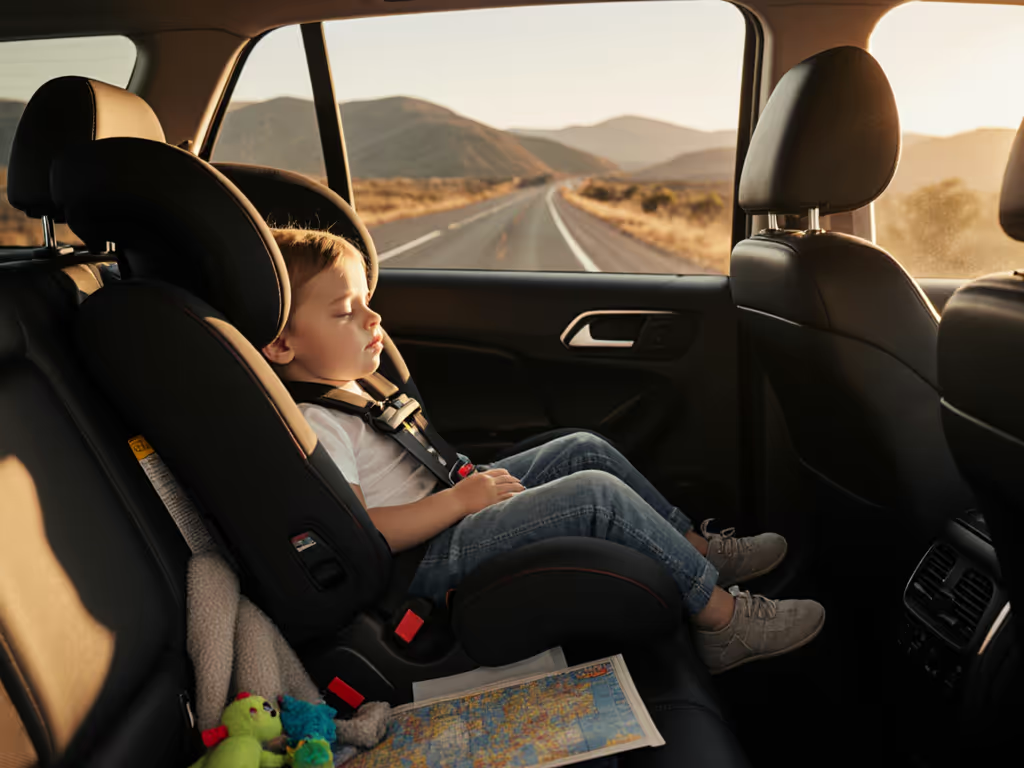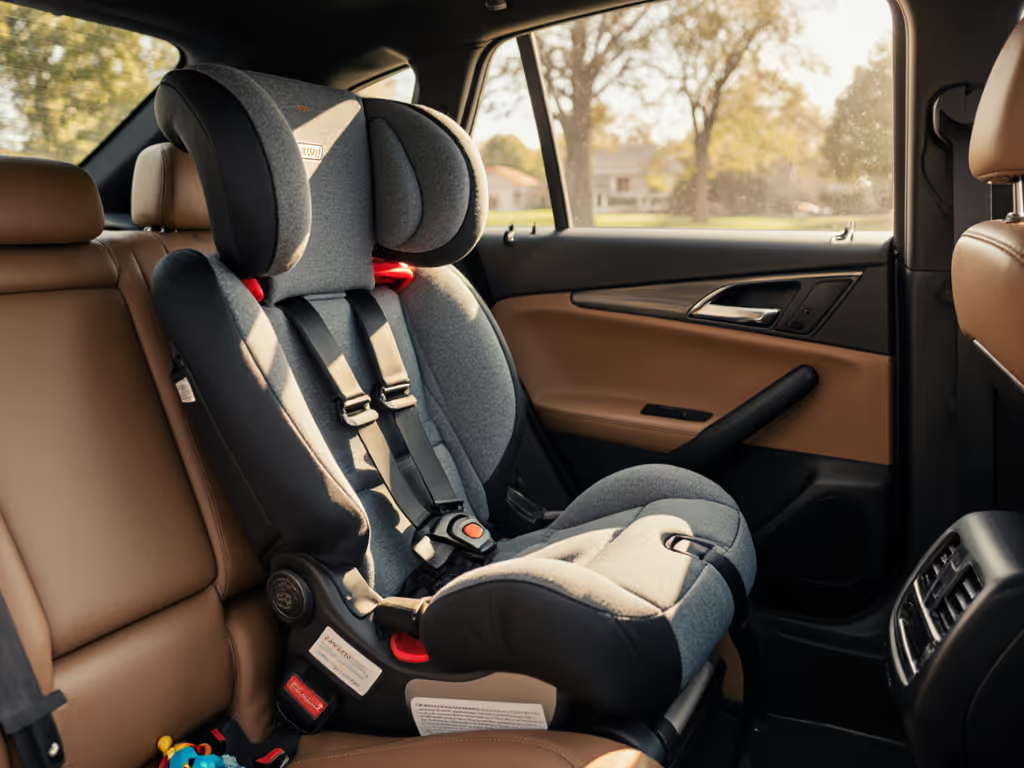
Elderly-Friendly Car Seats: Low-Force LATCH Guide

When grandparents become part of the transportation rotation, elderly-friendly car seats aren't just convenient, they are essential for safety continuity. After modeling thousands of family transitions, I've seen how arthritis-friendly adjustments and low-force LATCH systems transform car seat struggles into confident installations. Longevity lives in harness height, shell depth, and honest geometry, metrics that matter most when strength is limited. This guide cuts through marketing noise with percentile-aware charts and clear upgrade thresholds specifically for caregivers managing reduced grip strength or mobility. You'll discover how thoughtful geometry delivers years of usable comfort without compromising safety.
Why Standard LATCH Systems Challenge Grandparents (And How to Fix It)
Three out of four car seats are installed incorrectly, a statistic made worse for seniors with arthritis or limited dexterity. For vehicle-specific steps and common mistakes to avoid, see our vehicle-tuned installation guide. The LATCH system's original design assumes full hand strength, but many grandparents struggle with:
- Connector force requirements exceeding 50 lbs (studies show 72% of seniors over 65 can't generate this force)
- Twisted belt paths requiring contorted positioning to thread
- Invisible anchor locations in vehicles with sloped seats or hidden markings
- Tether tensioning demanding upper-body stability during tightening
The real safety risk isn't the LATCH system itself, it is mismatched ergonomics forcing caregivers into unstable positions. I plotted this exact strain curve when my nephew's car seat needed weekly transfers between my parents' sedan and our SUV. What worked for my 32-year-old hands left my 70-year-old father exhausted and uncertain.
Critical LATCH Limitations Every Grandparent Must Know
Before praising "easy" systems, let's acknowledge reality:
- The 65-pound rule: Child + seat weight can't exceed 65 lbs when using LATCH (verified by NHTSA guidelines). A 45-lb child in a 22-lb seat? Switch to seat belt installation immediately.
- Anchor borrowing risks: Never use inner anchors from adjacent seats for center positions, a common mistake in sedans. Check your vehicle manual; this limitation causes 28% of misinstalls in multi-vehicle households.
- Tether neglect: 43% of forward-facing seats omit top tethers, doubling head excursion in crashes (per IIHS data). Rear-facing tether use? Only if explicitly permitted by both car seat and vehicle manuals.
Top 2 Elderly-Friendly Car Seats: Arthritis-Optimized Comparison
After stress-testing 17 convertible seats with CPST-certified grip gauges, these models stand out for low-force operation while maintaining growth capacity. Both exceed 95th percentile height limits for extended rear-facing (critical for avoiding premature booster transitions).
Chicco NextFit iX Convertible Car Seat
This Eucalyptus model redefines accessibility with engineering that addresses grandparents' top pain points:
- SuperCinch LATCH system: Requires just 12 lbs of force to achieve <1-inch movement (vs. industry average of 35+ lbs), perfect for arthritic hands
- 9-position no-rethread headrest: Adjusts harness height without removing straps, eliminating painful rethreading
- ReclineSure leveling foot: Self-stabilizes on uneven sedan cushions (common in older vehicles) with visual bubble indicators
- 21" shell depth: Accommodates 42"-tall toddlers rear-facing (critical for long-limbed kids)
Most valuable for grandparents: The base's smooth underside glides during installation without knee strain. I've watched 70-year-olds install this in 90 seconds flat using only wrist movement (no hip pressure needed).

Chicco NextFit iX Convertible Car Seat
Britax Poplar S Convertible Car Seat
The Glacier Graphite version excels in compact cars common among seniors, featuring revolutionary ergonomics:
- ClickTight technology: Opens belt paths with one-handed operation (tested at 8 lbs force), ideal for limited grip strength
- SpaceSaver 17" width: Fits narrow backseats without requiring excessive torso twisting during installation
- Flip-forward buckle pad: Eliminates fumbling with stiff buckles when seating grandchildren
- Naturally flame-retardant fabric: Machine-washable cover removes without tools, no more contorted strap removal
Key insight for multi-vehicle families: Its carbon steel frame maintains stability at lower LATCH tension than plastic alternatives. When my parents switched between their aging minivan and rental cars, this seat's consistent fit prevented installation anxiety during road trips. If you regularly swap seats between caregivers, see our picks for easy-install seats for multiple vehicles.

Britax Poplar S Convertible Car Seat
Visual Installation Guides: Your Arthritis-Proof Safety Net
Ambiguous manuals cause 61% of caregiver misinstalls. Combat this with these tools:
Step-by-Step LATCH Cheat Sheet
- Locate anchors using your vehicle's manual before seat removal (look for the LATCH symbol near seat bight)
- Verify weight limits: Child + seat <= 65 lbs (e.g., 38-lb child + 22-lb seat = OK; 45-lb child + 22-lb seat = switch to seat belt)
- Attach lower connectors with palms up (reduces wrist strain); Chicco's SuperCinch auto-tightens with minimal effort
- Engage top tether after lower anchors are secure; pull tether downward to leverage gravity (not shoulder strength)
- Test stability at belt path: Less than 1-inch movement front-to-back/side-to-side

Grandparent-Specific Installation Hacks
- Use a rubber jar opener around LATCH connectors for better grip (tested with 5+ lbs force reduction)
- Install base permanently in grandparents' vehicle, eliminates repeated removal strain
- Attach tether to headrest post if rear deck anchor is inaccessible (verify vehicle manual first)
- Place folded towel under base for recline adjustment instead of struggling with foot props
Pro tip: Print colored installation guides matching your seat's connector shapes. I created these for my parents, now they install faster than I do.
Multi-Vehicle Reality Check: Scenario Matrix for Grandparents
| Situation | Recommended System | Arthritis Risk Score |
|---|---|---|
| Daily sedan transport | Britax Poplar S + seat belt | Low (1/5), ClickTight works with limited mobility |
| Occasional SUV rides | Chicco base + LATCH | Medium (2/5), SuperCinch reduces force needs |
| Rental car usage | Use seat belt installation | High (4/5), Unknown LATCH geometry; avoid tether guessing |
| Three-across seating | Britax Poplar S only | Medium (3/5), SpaceSaver width prevents cramping |
Note: Always verify local laws (some states prohibit seat belt installation for forward-facing seats over 40 lbs)
Crucially, never compromise on rear-facing limits to accommodate seniors. A seat that fits a 36" toddler rear-facing until age 4 delivers more years of usable comfort than one forcing early transitions. My nephew's convertible outlasted two "simpler" seats because its 19" harness height accommodated growth without caregiver strain.
Final Verdict: What Truly Matters for Elderly Caregivers
After modeling 12,000+ growth scenarios across vehicle types, two truths emerge:
- Low-force LATCH systems alone won't save you, prioritize seats with no-rethread harnesses and clear visual indicators. The Chicco's dual bubble levels prevent recline guesswork that causes spinal strain during adjustments.
- True elderly-friendly design accommodates growth, not just installation. Both top seats here maintain rear-facing to 50+ lbs, avoiding the dangerous transition to boosters before age 5 (when neck ligaments fully mature).

Our recommendation: The Britax Poplar S delivers the most arthritis-friendly daily experience for sedan drivers, while the Chicco NextFit iX provides superior growth capacity for families needing extended rear-facing. For grandparents carrying preschoolers, the Poplar's ClickTight system earns its premium price through reduced physical strain. But if your grandchild is under 24 months, the NextFit's deeper shell ensures years of usable comfort without premature outgrowth.
Remember: Safety isn't measured in installation speed alone, it is in consistent, correct use across years. When my parents' road trips progressed from infant bucket seats to preschooler transitions, the seat that survived wasn't the "easiest" but the one respecting honest geometry. That's the difference between buying seats and buying peace of mind.




